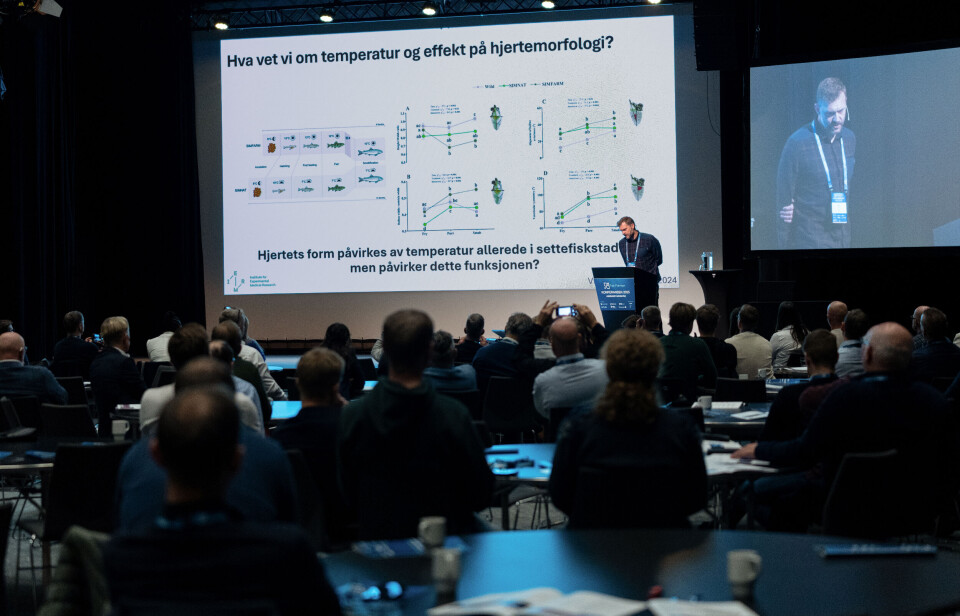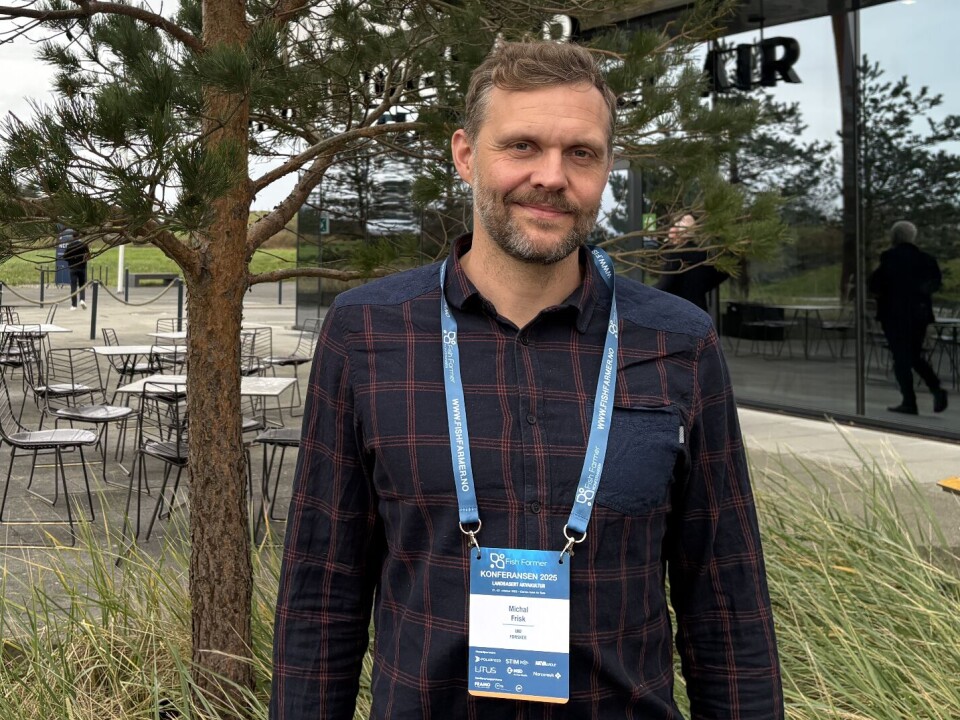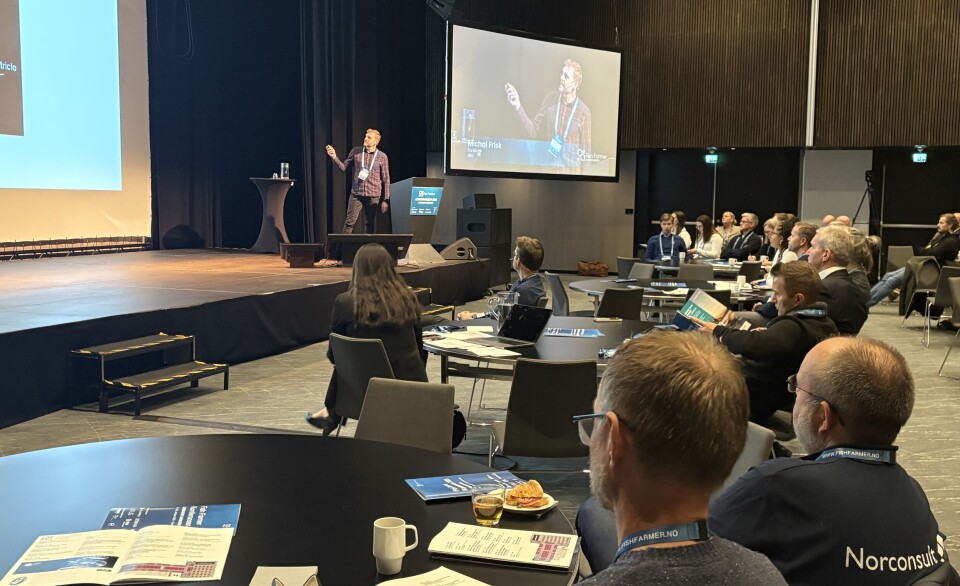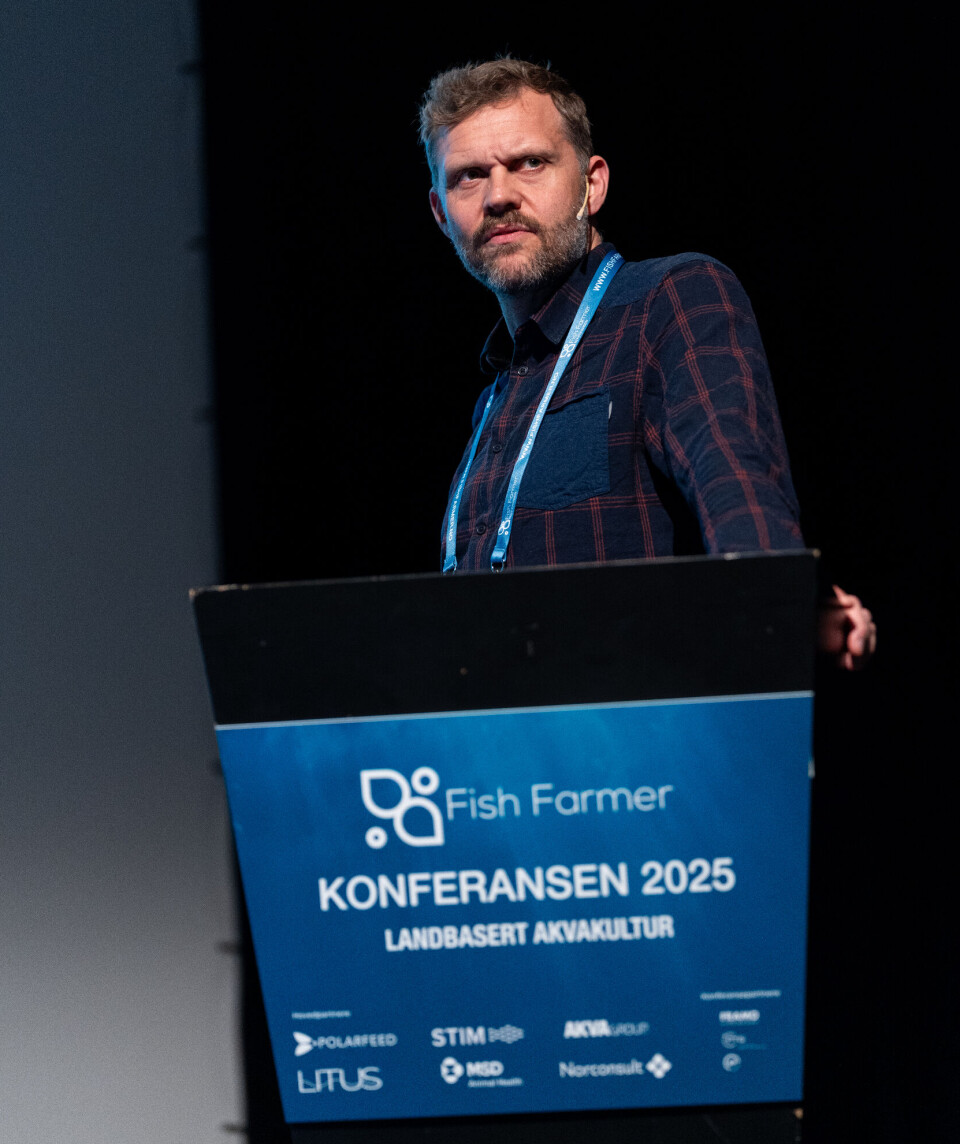
Warm water can affect salmon heart shape very early in life stage
Researcher Michael Frisk presented recent results from studies showing how increased temperature may adversely impact fish even before they are hatched
During this year's Litus Akva / Agano Events Fish Farmer conference in Sola, southwest Norway, researcher Michael Frisk gave a lecture on how temperature and light conditions affect heart development in hatchery facilities.
Frisk leads the research project "Temperature effects on heart morphology and function in hatchery facilities", a collaboration between Oslo University, Oslo University Hospital, the Norwegian Institute of Marine Research and the Norwegian Veterinary Institute, funded by the Research Council of Norway.
“We have long known that high temperatures in hatcheries increase the incidence of abnormal heart morphology in salmon. What we wanted to find out was when these changes actually occur – already during egg incubation, or later in the life cycle,” Frisk told the audience.
The heart shapes differently

Frisk showed images and measurements of hearts from both wild and farmed salmon. The farmed fish often had rounder and more asymmetrical ventricles and a larger bulbus, the part of the heart that pumps blood out into the body.
Using ultrasound and morphological measurements, the researchers were able to show that around 75% of farmed salmon had deviations in the shape of their hearts compared to wild fish.
“This may seem undramatic, but small differences in structure can have consequences for function over time,” explained Frisk.
Experiments simulated natural and artificial environments
In a previous experiment, where the researchers compared two farming groups – SimFarm and SimNat – the difference became clear. The SimFarm group was kept under continuous light and high temperature, while the SimNat group was given natural light conditions and lower temperatures.
“The result was clear. The fish in the SimNat group had hearts that were more similar to wild fish – longer ventricles, smaller bulbi and more symmetrical structures. The hearts in the SimFarm group were rounder and had more deviations,” said Frisk.
Ultrasound measurements showed that blood is pumped faster through the heart in fish from the warm water group, even at rest.
"This suggests that the heart has to work harder during a calm state. There is little to go on when the fish are later to grow and withstand handling. We believe these small differences may become significant towards the end of the production cycle," he said.
Eggs at 2°C and 8°C – big differences
In the latest part of the project, the research group has looked at how temperature affects heart development during egg incubation. Eggs were hatched at 2°C and 8°C, respectively, and the results were clear at the yolk sac stage.

The fish from the warm water group had smaller, rounder hearts with larger bulbi and more deviations, while the heart beat faster and contracted more forcefully to maintain circulation.
“The heat-incubated fish had a higher pulse rate and stronger contractions, simply because the heart has to compensate for its smaller size. This may indicate that they work harder from the start of life,” explained Frisk.
He said they also found several deformities, such as scoliosis, anaemia, and missing pericardial sac, in fish that had been exposed to warmer temperatures.
“When you see such differences so early, you have to ask yourself whether we are drifting too far away from the natural biology of the fish,” he said.
Differences disappeared – and returned
The researchers followed the fish further. The differences between the groups apparently disappeared during the smolt phase, but reappeared at harvest size – when the hearts of the warm water group again showed a higher pulse rate, a more round shape and clearly higher contraction force.
“This suggests that the heart can compensate for periods, but that the strain returns when the fish grows large. The heart simply cannot keep up with the rest of the body when growth is rapid,” said Frisk.
Temperature and light – a biological compromise
Frisk pointed out that the combination of high temperature and continuous light in today’s hatchery production results in rapid growth, but also higher physiological stress.

“We're pushing the biology quite hard. The heart has to work harder, and that makes the fish more vulnerable. I think a simulated winter period, with lower temperatures and darkness, could be beneficial to give the heart time to develop properly,” he said.
He drew parallels to broiler chicken production in the 1990s, where rapid growth led to heart problems.
“We may not be that far away from a similar scenario for salmon if we don't adjust the pace a little,” he said from the stage.
Small steps can make a big difference
After the lecture, Frisk explained to LandbasedAQ how the research can be used in practice.
“We see that stable and lower temperatures during egg incubation, preferably below five degrees, result in more normal heart morphology. It is a simple measure with few additional costs.”
Frisk also recommends reducing the temperature to below 10°C after initial feeding and introducing a clear cold and dark period.
“These are measures that can strengthen fish health and produce more robust fish. Our results are preliminary, but point in a clear direction: more natural conditions produce better hearts and better fish,” says Frisk.
The project is still ongoing, and Frisk points out that this is a modest contribution, but one where the researchers see the outlines of an important principle.
“The heart is formed early, and small changes in its functioning can have major consequences later in life,” he concludes.
